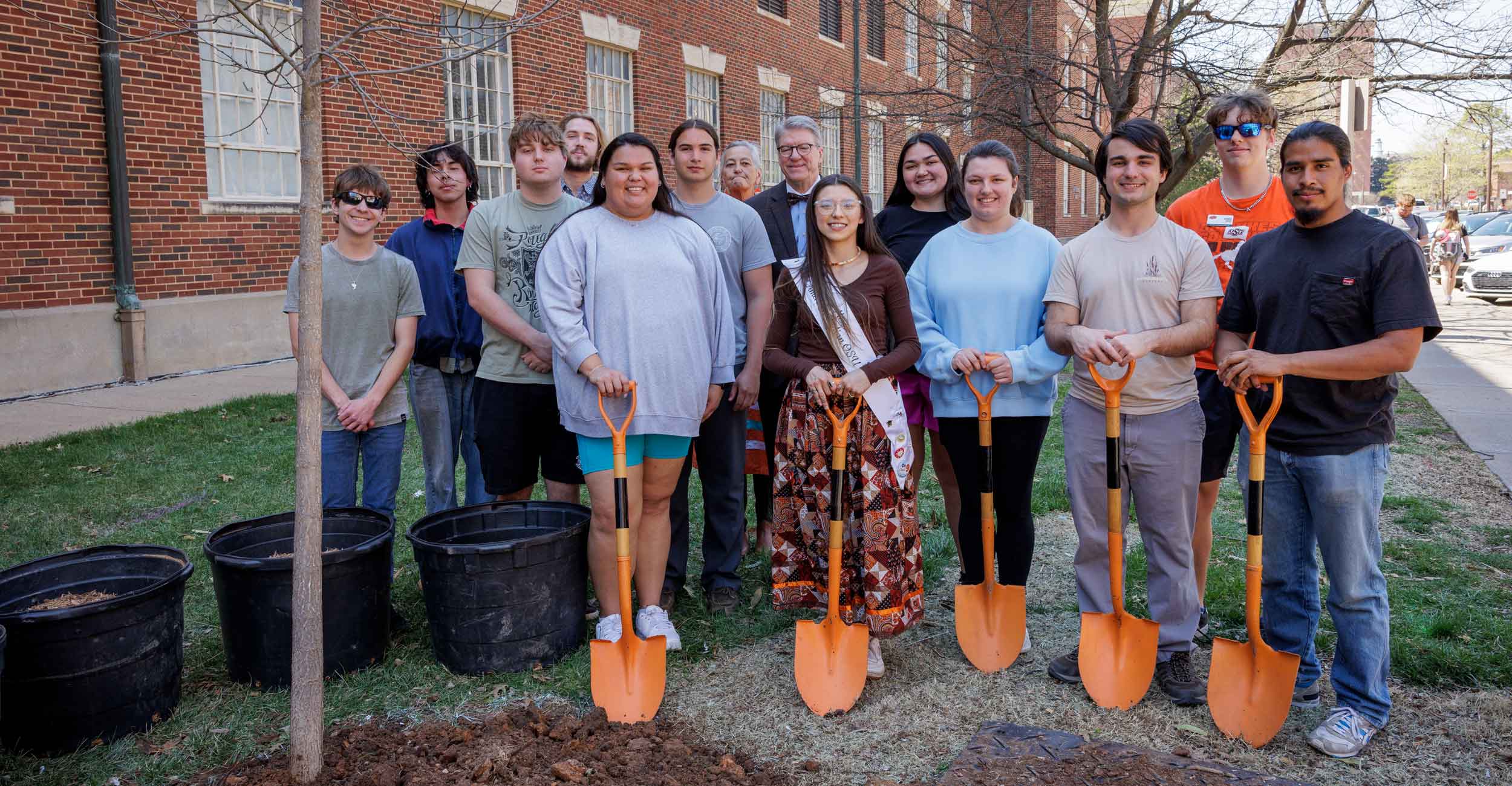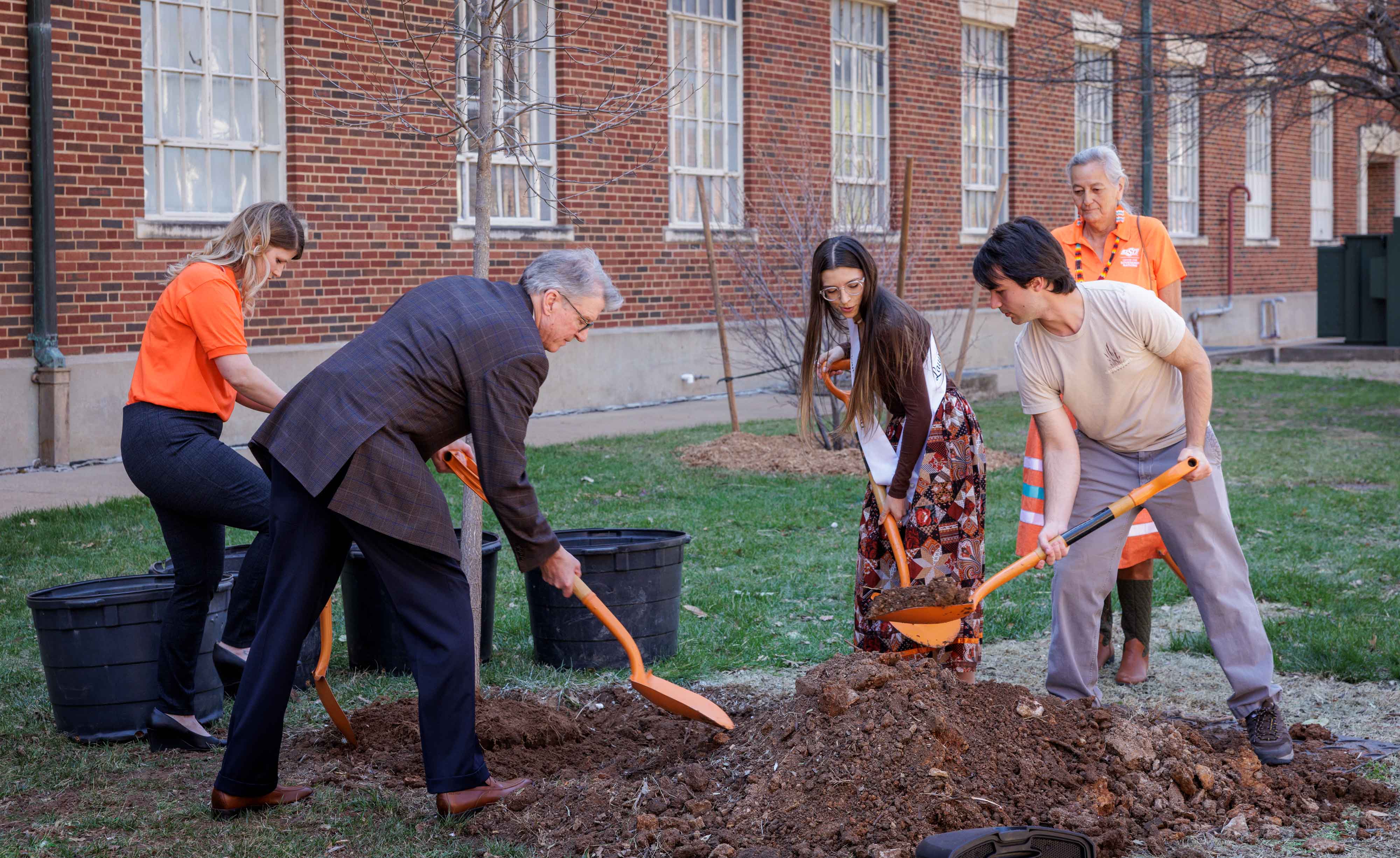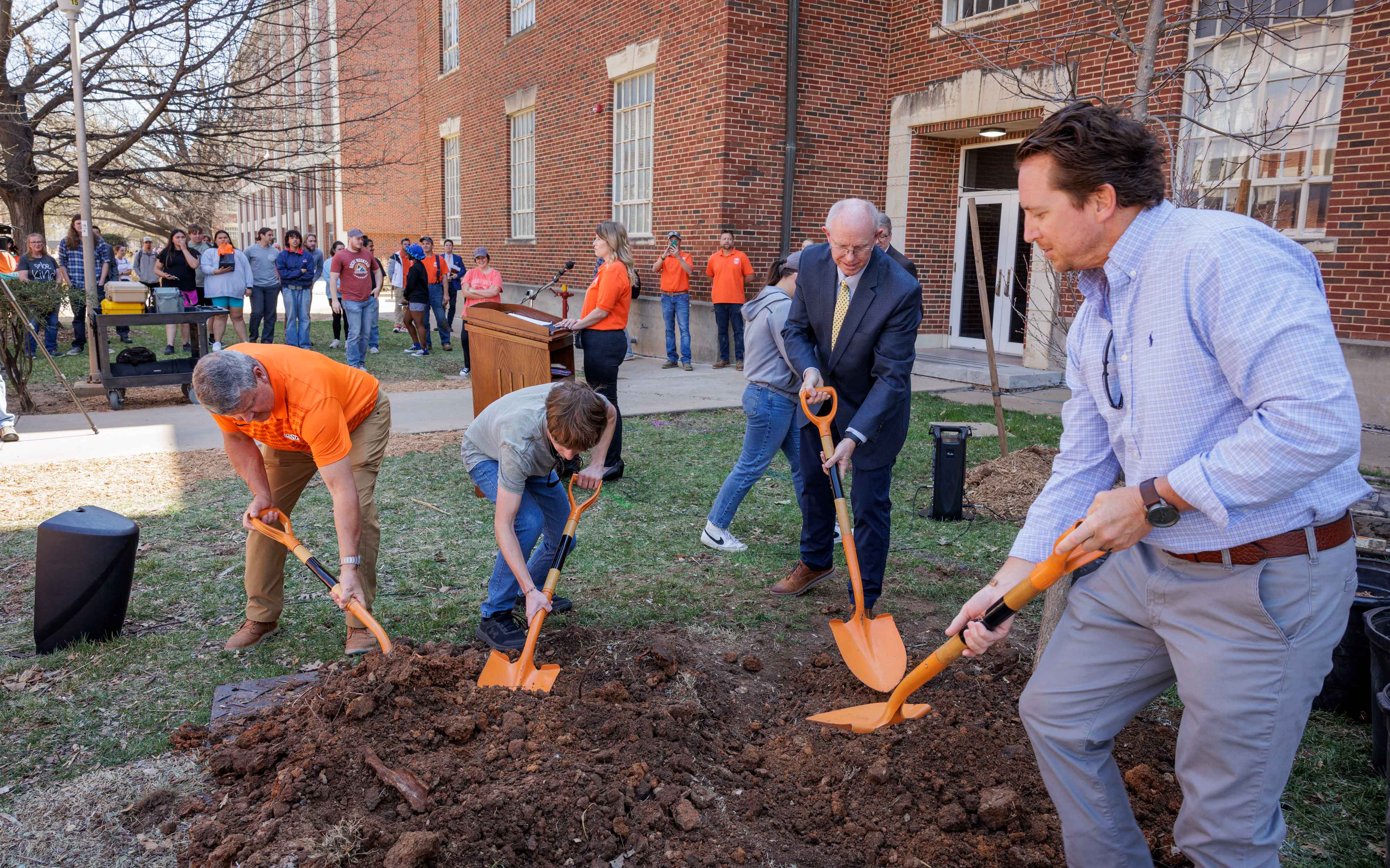
OSU plants 3 trees to celebrate Oklahoma Arbor Day
Thursday, March 27, 2025
Media Contact: Sydney Trainor | Communications and Media Relations Specialist | 405-744-9782 | sydney.trainor@okstate.edu
Oklahoma State University held its 15th annual Arbor Day celebration during Oklahoma Arbor Week and partnered with the OSU Native American Student Association and Landscape Services to plant three trees.
During the celebration, OSU Interim President Jim Hess reminded the crowd that “the two best times to plant a tree are 20 years ago and today.”
“My favorite part of today's celebration is the collaboration between the Native American Student Association and our Landscape Services,” Hess said. “The native plant corridor highlights our university's commitment to serve the institution and honor the heritage of so many of our current and former students, as well as our community at large. Because my first priority as your president is to always put students first, and we always do, I'm proud that this event highlights and shines a light on the great work of our students.”
This year’s trees were grown at Greenshade Trees in Yukon, Oklahoma, and were planted
on the north side of the Life Sciences East building as part of the Native Plant Corridor
that runs from Hester to Monroe streets.


OSU Arborist Caitlin Gipson said her team has been focused on planting native species in that area. OSU has been recognized for 14 consecutive years by the Arbor Day Foundation as a Tree Campus for Higher Education.
This year, Natural Resource Ecology Management student Toby Martin collaborated with Landscape Services to integrate his enthusiasm for Native American heritage and botany. He assisted in identifying suitable tree species and their optimal planting locations.
“I'm elated to be here today because I love native plants. I don't shut up about them, and I often forget that not everyone around me is a botanist. So, what I mean by native plants, are plant species that evolved in our area's historical landscape,” Martin said. “Their presence here means a few things that make them very cool. Because they evolved in the Oklahoma region, they are uniquely fit to meet the environmental challenges our area throws at them compared to introduced species often used in traditional landscaping, they're tough, and from a practical perspective, they're more efficient and often take less work and water to keep alive.”
The native plants in Oklahoma adapted to the land and wildlife adapted to depend on the plant species.
Butterflies are a great example of a species that needs a specific plant to reproduce and benefit greatly from the Native Plant Corridor.
Two of the trees planted were serviceberry — a small tree or shrub with beautiful white flowers in spring and edible berries and are known for their adaptability and fall color. The third tree was a hackberry, known for its tough, adaptable nature, and is easily identified by its distinctive corky, knobby bark and small, edible fruits.
“Not only have wildlife adapted to native plants, but people have too. Native plants are culturally important to tribal nations because we share an Indigenous identity with them, like the buffalo that the plant,” Martin said. “Native tribes depended on for food and cultural traditions. Plants have an equal importance in sustaining indigenous identity. That's why we chose to plant serviceberries and hackberry. These plants are abundant across North America, and they have served a crucial role in the historical diets of Native Americans.”
